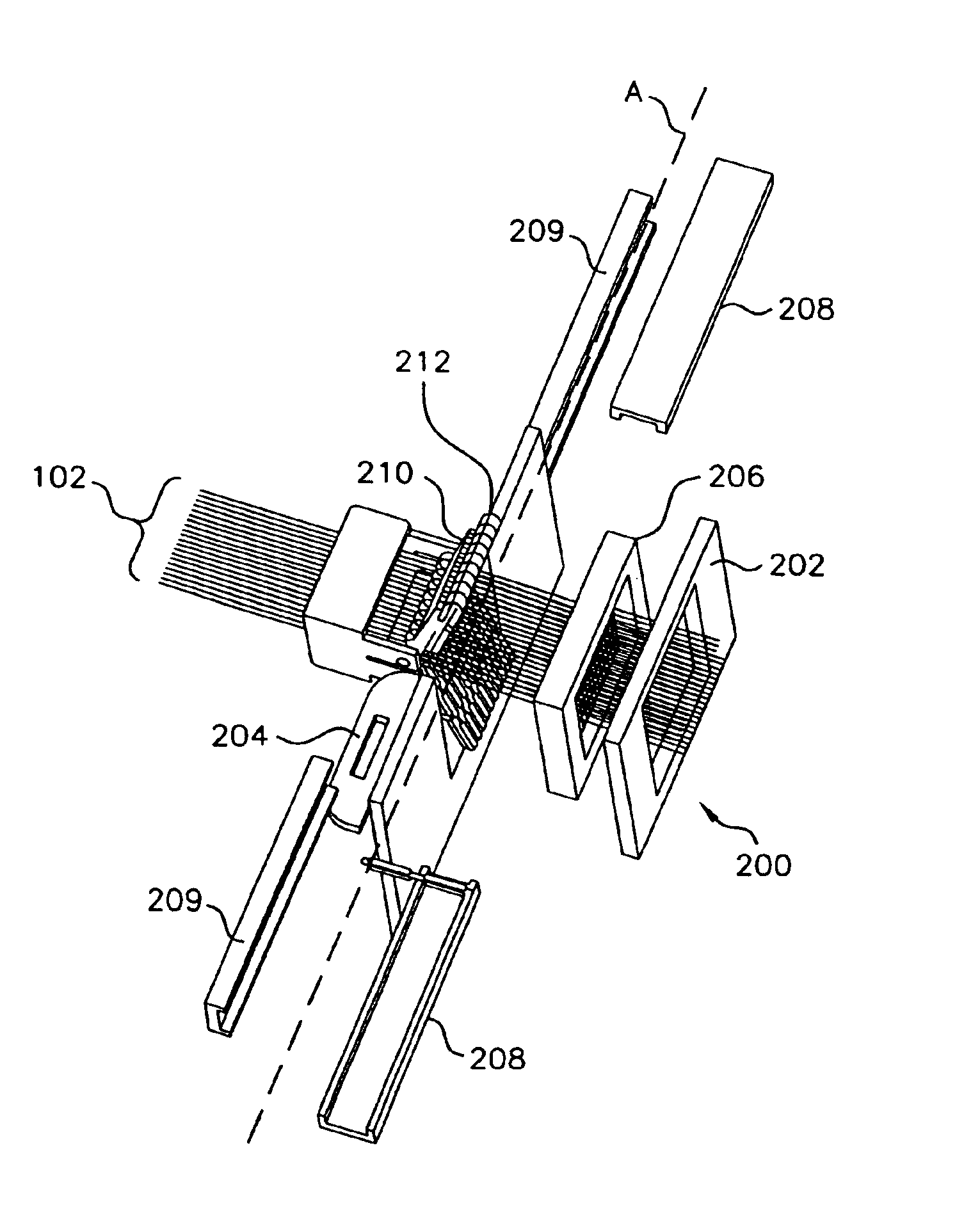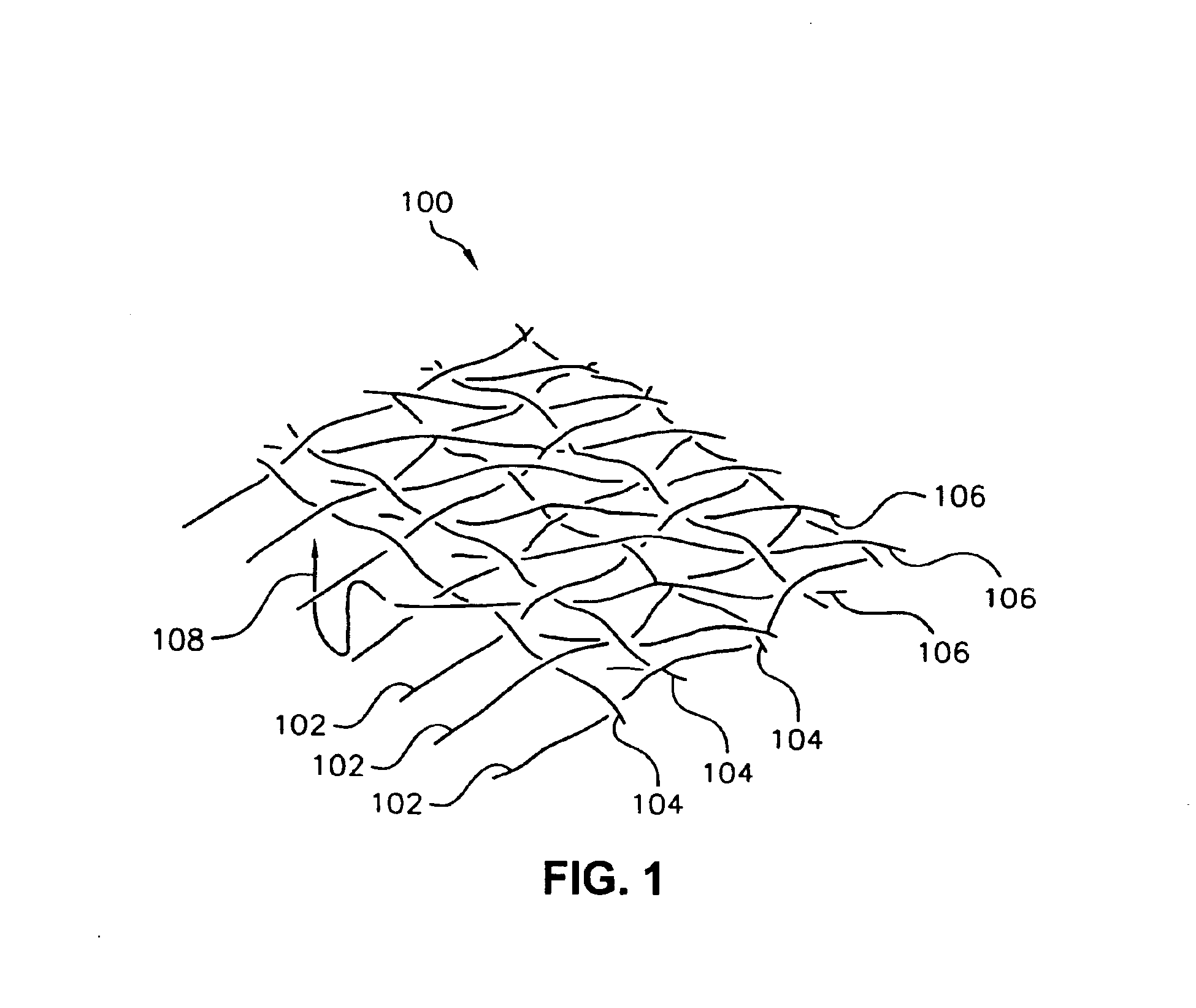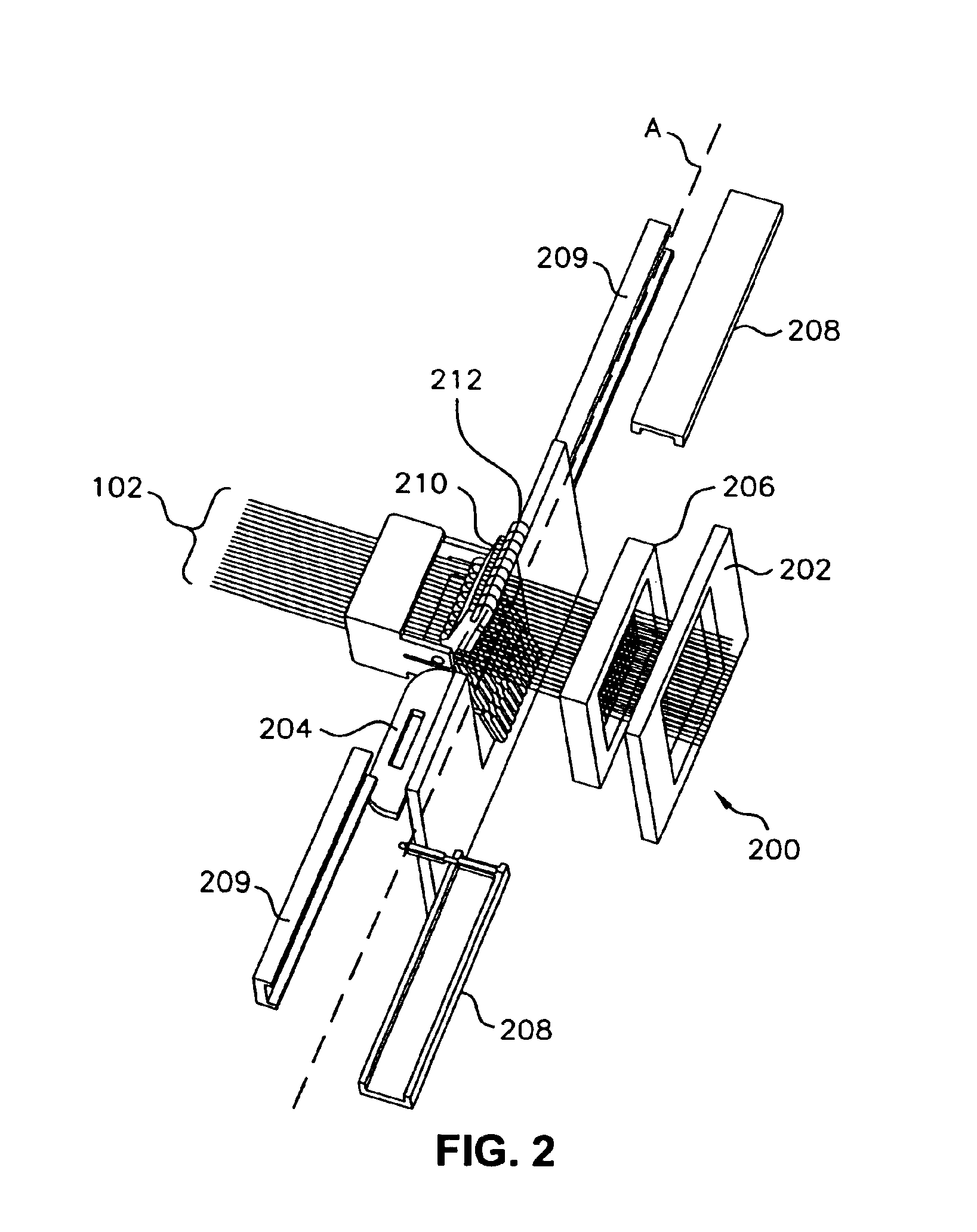Loom and method of weaving three-dimensional woven forms with integral bias fibers
a three-dimensional woven form and loom technology, applied in the field of loom designs, can solve the problems of inability to control the number of fibers pointing in a particular direction, the tensile strength in that direction, and the limitations of 2d woven structures, so as to improve the weaving loom
- Summary
- Abstract
- Description
- Claims
- Application Information
AI Technical Summary
Benefits of technology
Problems solved by technology
Method used
Image
Examples
Embodiment Construction
[0038]The entire disclosure of U.S. patent application Ser. No. 09 / 956,641, Sep. 20, 2001, is expressly incorporated by reference herein.
[0039]An exemplary embodiment of the present invention is a loom that automatically inter-weaves bias-plied, 3D, woven pre-forms into complex configurations such as “Pi” and “T” shapes. This is in contrast to methods such as stitching mechanisms designed to sew together 2D layers of bias plies or manual hand-layup of bias plies to form 3D structures. This exemplary embodiment offers several advantages over the known art, including:
[0040]1. The elimination of a stitching mechanism reduces fiber damage within the woven pre-form, achieves higher damage tolerance, and tolerates higher tension and shear loads for composite materials. Further, the elimination of a stitching mechanism reduces fabricating costs by avoiding the stitching process.
[0041]2. The elimination of a hand-layup process reduces possible de-lamination failure of the composite structur...
PUM
 Login to View More
Login to View More Abstract
Description
Claims
Application Information
 Login to View More
Login to View More - Generate Ideas
- Intellectual Property
- Life Sciences
- Materials
- Tech Scout
- Unparalleled Data Quality
- Higher Quality Content
- 60% Fewer Hallucinations
Browse by: Latest US Patents, China's latest patents, Technical Efficacy Thesaurus, Application Domain, Technology Topic, Popular Technical Reports.
© 2025 PatSnap. All rights reserved.Legal|Privacy policy|Modern Slavery Act Transparency Statement|Sitemap|About US| Contact US: help@patsnap.com



